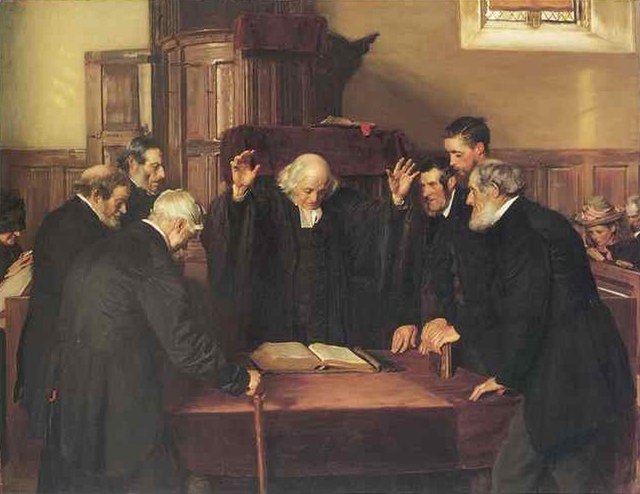A sect is a subgroup of a religious, political, or philosophical belief system, usually an offshoot of a larger group. Although the term was originally a classification for religious separated groups, it can now refer to any organization that breaks away from a larger one to follow a different set of rules and principles. Sects are usually created due to perception of heresy by the subgroup and/or the larger group.
Japanese buddhist monk from the Sōtō Zen sect
Prayer meeting of the Korpela movement in 1935
Ganesha worshippers
M'zab valley in Sahara has been home of the Ibadi branch of Kharijte sect.
Sociological classifications of religious movements
Various sociological classifications of religious movements have been proposed by scholars. In the sociology of religion, the most widely used classification is the church-sect typology. The typology is differently construed by different sociologists, and various distinctive features have been proposed to characterise churches and sects. On most accounts, the following features are deemed relevant:The church is a compulsory organisations into which people are born, while the sect is a voluntary organisation to which people usually convert.
The church is an inclusive organisations to which all kinds of people may belong, while the sect is an exclusive organisation of religiously qualified people.
The church is an established organisation that is well integrated into the larger society and usually inclined to seek for an alliance with the political power, while the sect is a splinter group from a larger religion: it is often in tension with current societal values, rejects any compromise with the secular order and tends to be composed of underprivileged people.
The church exhibits complex hierarchical bureaucratic structures, while the sect is a smaller, democratic and relatively informal organisation.
The ministers of a church are formally trained, educated and ordained, while the sect rejects sharp distinctions between clergy and laity, and is often ruled by charismatic leaders.
In theology and liturgy the church is inclined to dogmatism, traditionalism and ritualism, while the sect promotes intensified spiritual experiences for its members and adopts a more inspirational, informal and unpredictable approach to preaching and worship.

Herättäjäjuhlat, or the Awakening festival, in Seinäjoki, Finland in 2009
A scene from the 1904–1905 Welsh revival. Dan Davies of Hermon Chapel conducting a baptism in the River Gwaun in 1905.
The Ordination of Elders in a Scottish Kirk, by John Henry Lorimer, 1891. National Gallery of Scotland.
Ordination to Priesthood, St John the Baptist Cathedral, Norwich, Roman Catholic Diocese of East Anglia, 2019








